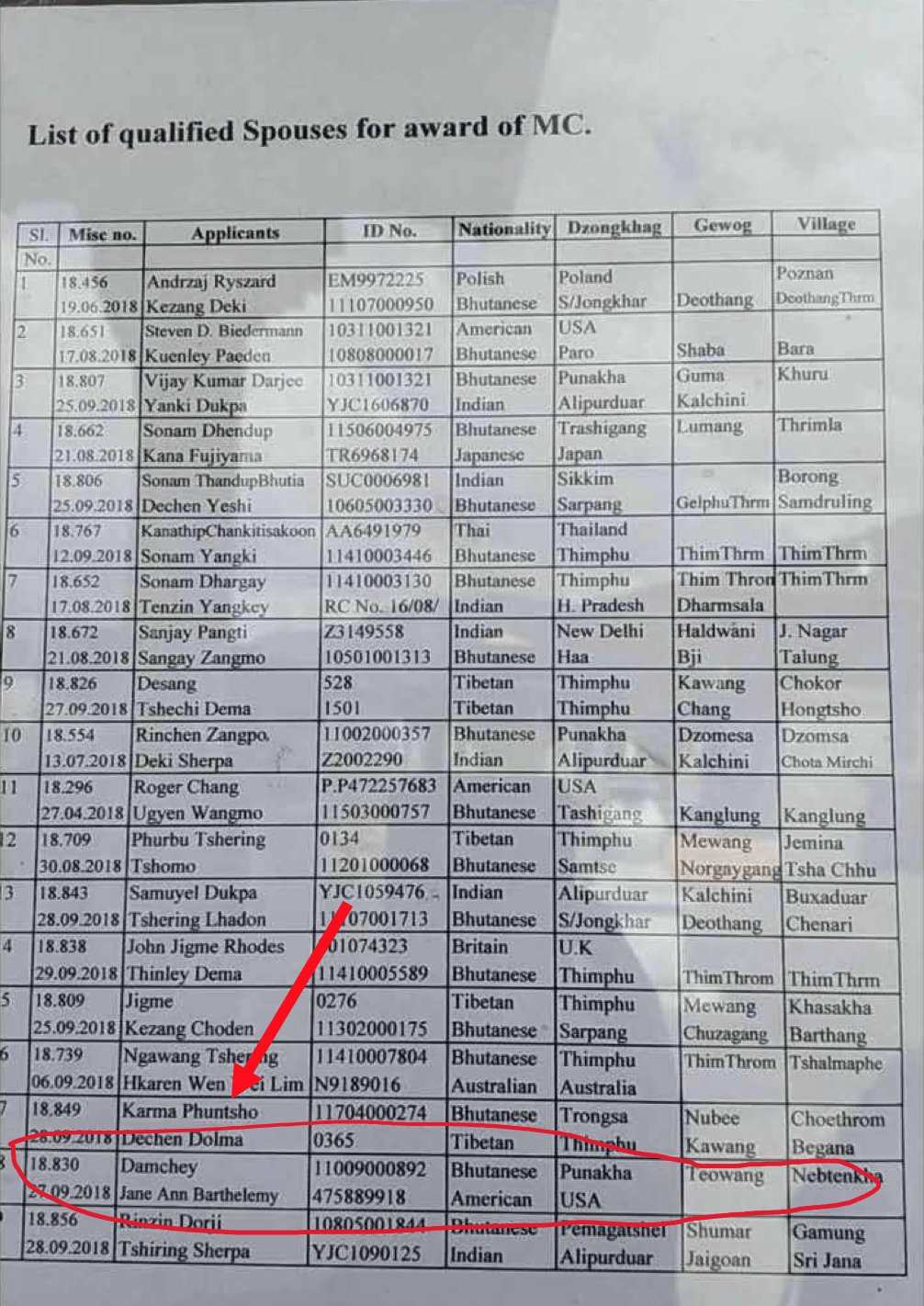
174 couples interviewed for foreign marriages last week, but the High Court approved only 26. Here’s the list of qualified couples. We passed! Somehow I feel accepted not only by Lama’s family, but also by Bhutanese culture.

Yep, here’s the marriage certificate from the High Court. Trust me on this, though it’s in Dzongkha. See my name?

I’m in Kathmandu for a few weeks, as my Bhutan visa expired October 6th. Notice the hazy air quality is different from Bhutan? We’re waiting for our Marriage Certificate to be printed in English. Soon the Immigration Office can issue my new visa into Bhutan.

Back in Kathmandu I’m staying with my friend Diki Sherpa, owner of the Butsugen Hotel. She and her husband run a tight ship, spotless, excellent service, clean food, and friendly guidance for visitors near the Boudha Stupa. Julie is the hotel guard dog.
I love the Boudha Stupa in Kathmandu. The tradition is to walk around it in a clockwise direction 3 times a day or more, an uneven number of times. See people carrying a mala (prayer beads) in the left hand? Some people also carry a prayer wheel in the right as they chant quietly.

Workmen risk their lives every day in this part of the world. These boys precariously perch on a bamboo pole, painting windows 30 feet above the street.

Today I tried Thali for lunch at Thakali Kitchen. A traditional Indian meal with rice, dal, vegetables, crispy chick pea chapati, pickled veggies and spicy sauce, it is often served with curd, lime, and hot pepper. That’s mutton in ULH. I skipped the white rice.
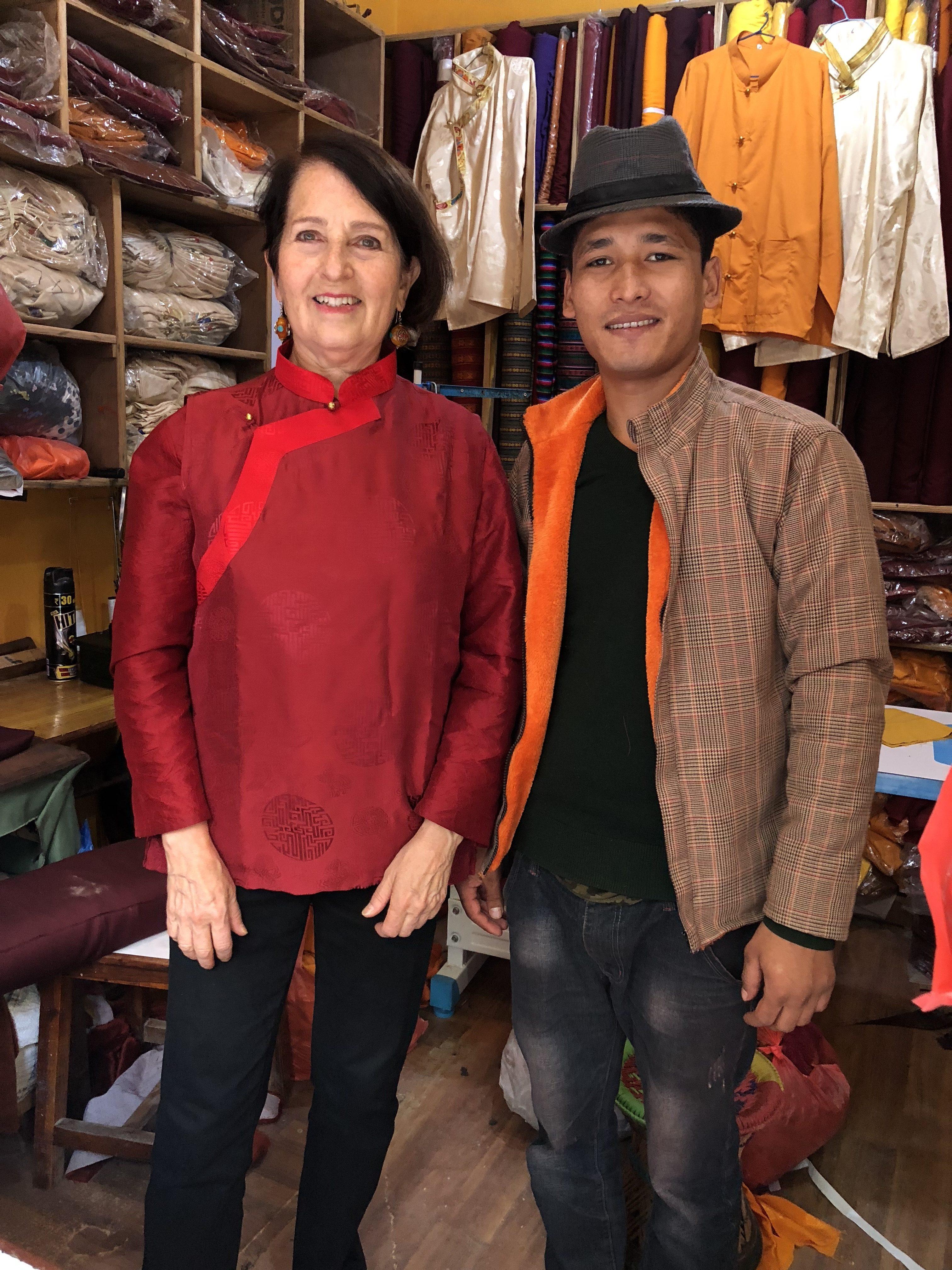
This is Harry. He works in a tailor shop for monks near the Boudha in Kathmandu. I wanted a warm vest for cold Bhutan winters, so I asked him to make it for me. I picked it up today and it fits perfectly. Nice job! Thanks!
I went to supermarket Bharatbhateni for toiletries and snacks, a pretty strange experience as I can’t read most of the labels in Nepali. The electricity went out three times while I was in the store, and again at check-out. I’m stocking up in here Nepal as prices are cheaper than Bhutan.


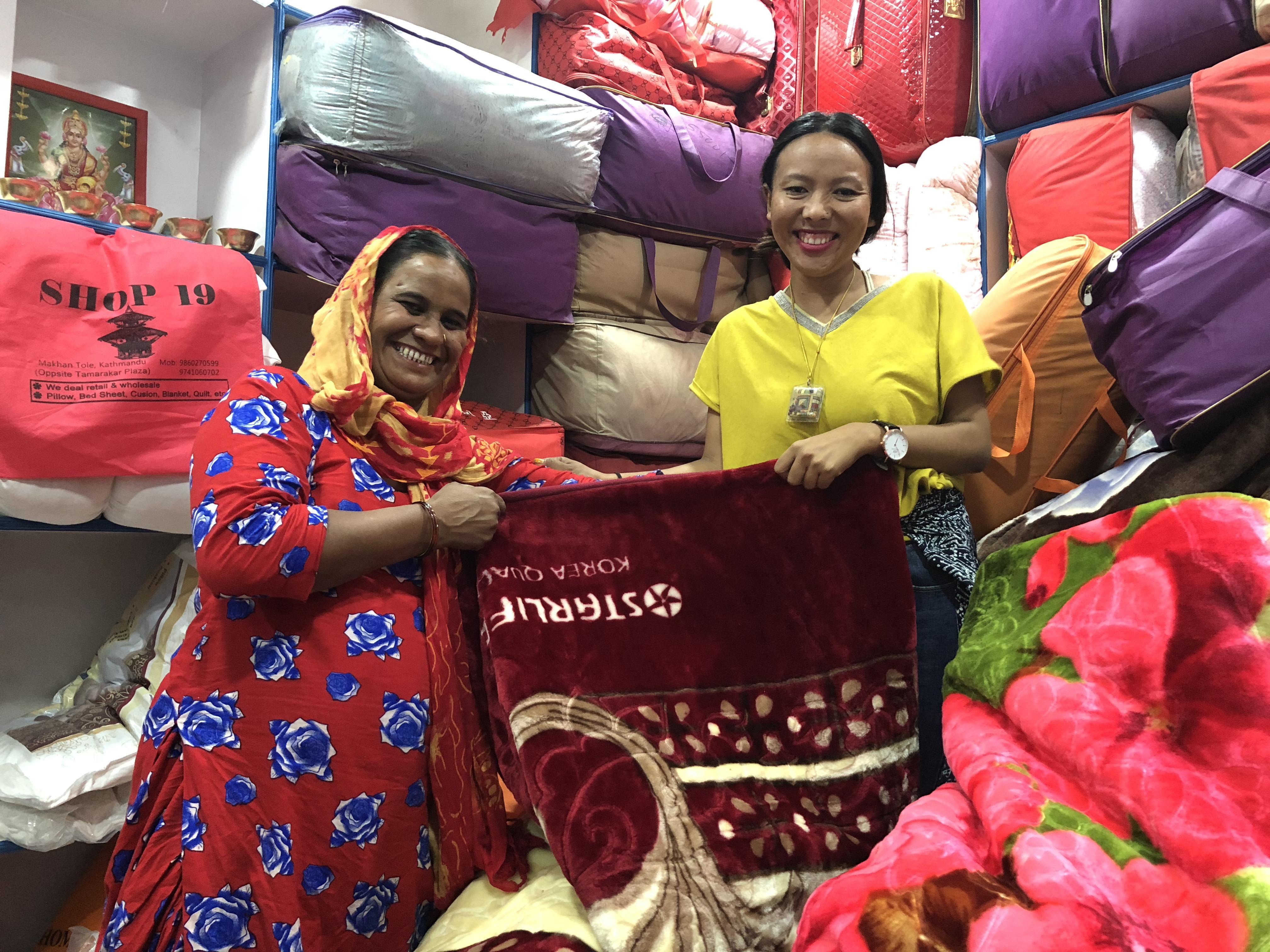


Breakfast this morning was a special order. Fried rice made from dark, unpolished red rice that I had brought from Bhutan. It tasted rich, nourishing, and deliciously nutty. I asked the cooks at Butsugen Hotel to soak it for 20 hours, rinse, saute it with veggies, and put an egg on top. OMG Yummy! The hotel owners were so excited they asked me to send 20 kilos of dark unpolished red rice from Bhutan for their guests. My sister Ghalem says she’ll order it from her mother’s rice production in Punakha. It’s fun to share.
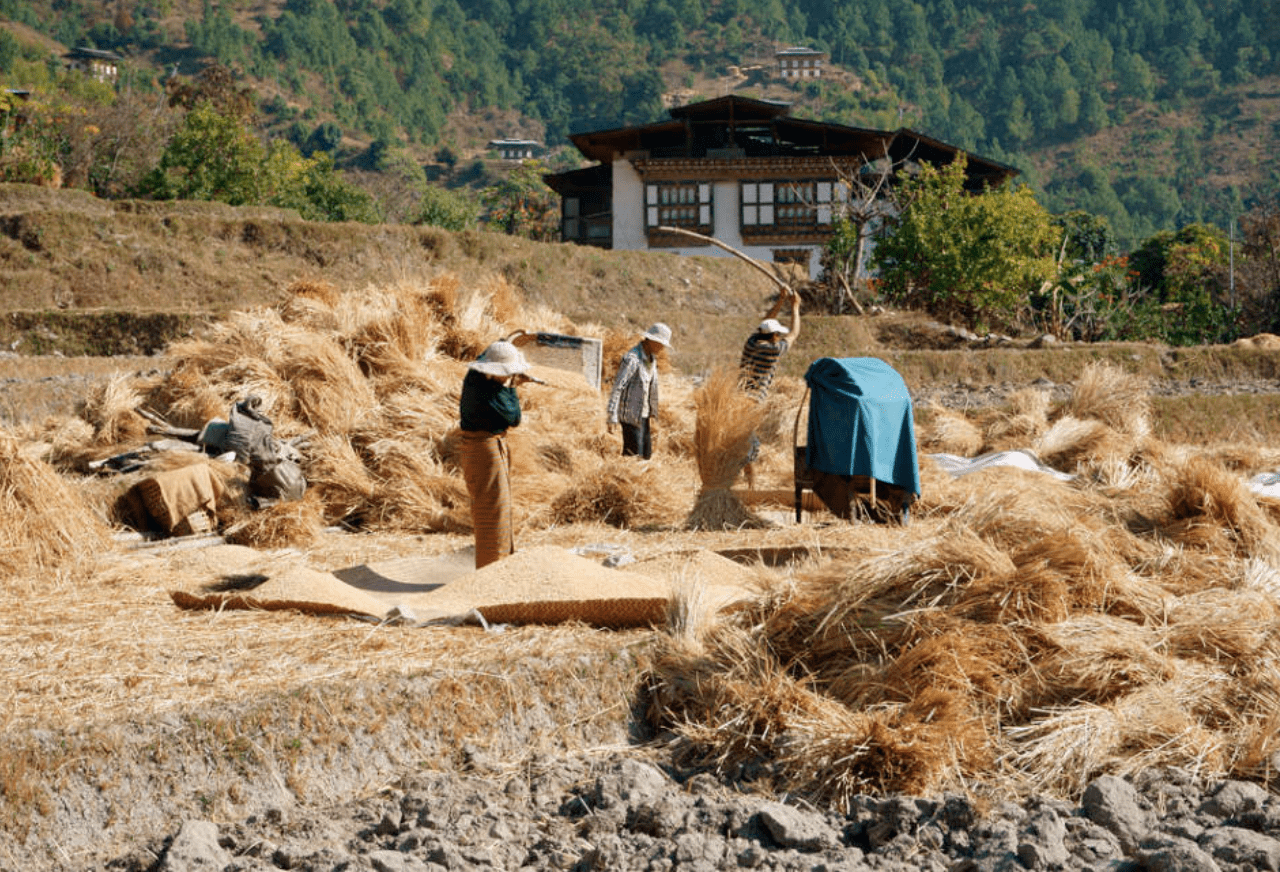
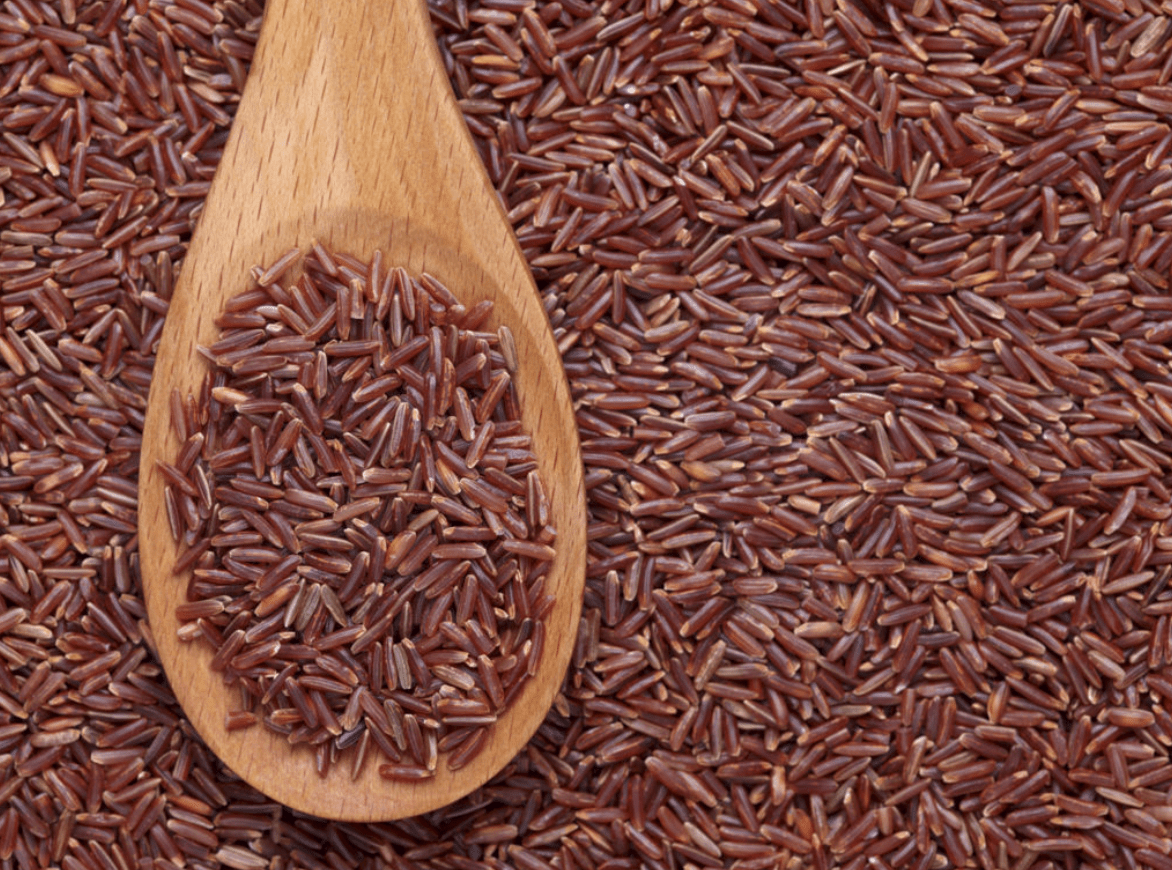
I adore especially the dark, un-polished, soaked kind. So, what is red rice? Red rice is a medium grain rice grown in the Eastern Himalayas. Unpolished red rice has a dark red outer coating on the grain.
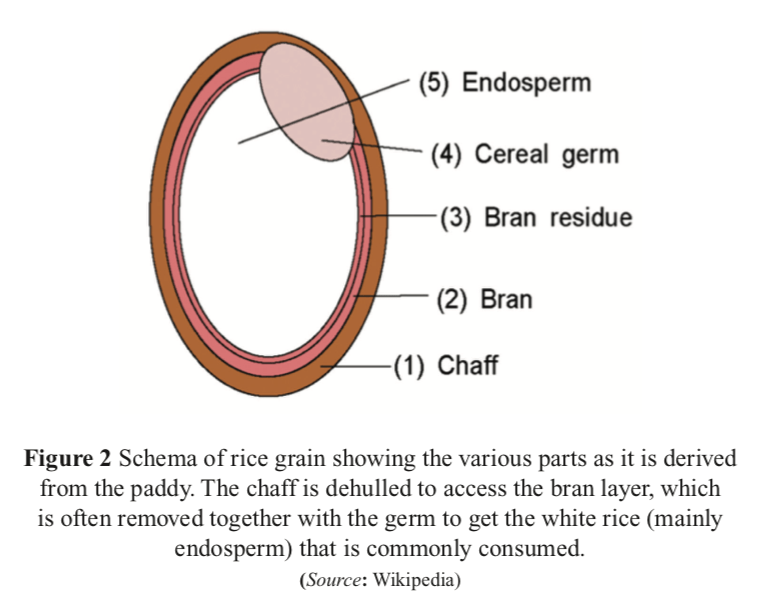
The solution to good nutrition from grains is simple: Remove only the very outer hull, and leave the nutrient-rich coatings. Then soak the dormant grain to remove the anti-nutrients. This “wakes it up”. When sprouted, grains are ready to grow into a plant. Are they excited? Yes, they’re at their nutritional peak! Even the molecular composition changes to make them lower in carbohydrate, higher in protein, and high in GABA. Yes, GABA, or Gamma-Aminobutyric acid, is an essential amino acid (a protein) that happens to be the chief inhibitory neurotransmitter in the mammalian central nervous system. That means its principal role is to reduce stress and tension in the nervous system. In humans, GABA is also directly responsible for regulating muscle tone.
How did we end up with low-nutrition white rice?
Throughout ancient history, people ate whole grains after soaking. The polishing of rice was introduced relatively recently by the British in the 17th century. Considered superior, these pure white foods were prized by emperors and wealthy classes. At that time “dirty” unpolished rice was “poor peoples’ food”. Gradually, white rice came to be used by the masses. Unfortunately, milling removes about 80 percent of nutrients from rice. The switch to polished white rice, which is high-glycemic and low in nutrition, has led to widespread diabetes, metabolic syndrome, beriberi, and other dietary deficiencies.
My Paleo colleagues would have us eliminate all grains. OK, but poor people won’t be able to afford it. There’s tremendoous waste in removing and throwing away the nutrients in grain. Why not just consume Earth’s offerings in a less processed form?

Which is the best red rice?
In the Thimphu market, red rice varies in color according to how much it is polished. Color ranges from dark red to pink to almost white. Polished rice is lighter in color, has less nutritional value, and less flavor. Unpolished red rice is equivalent in nutritional value to unpolished brown rice. Polished rice cooks quickly in about 20 minutes, whereas unpolished rice takes 45 minutes.
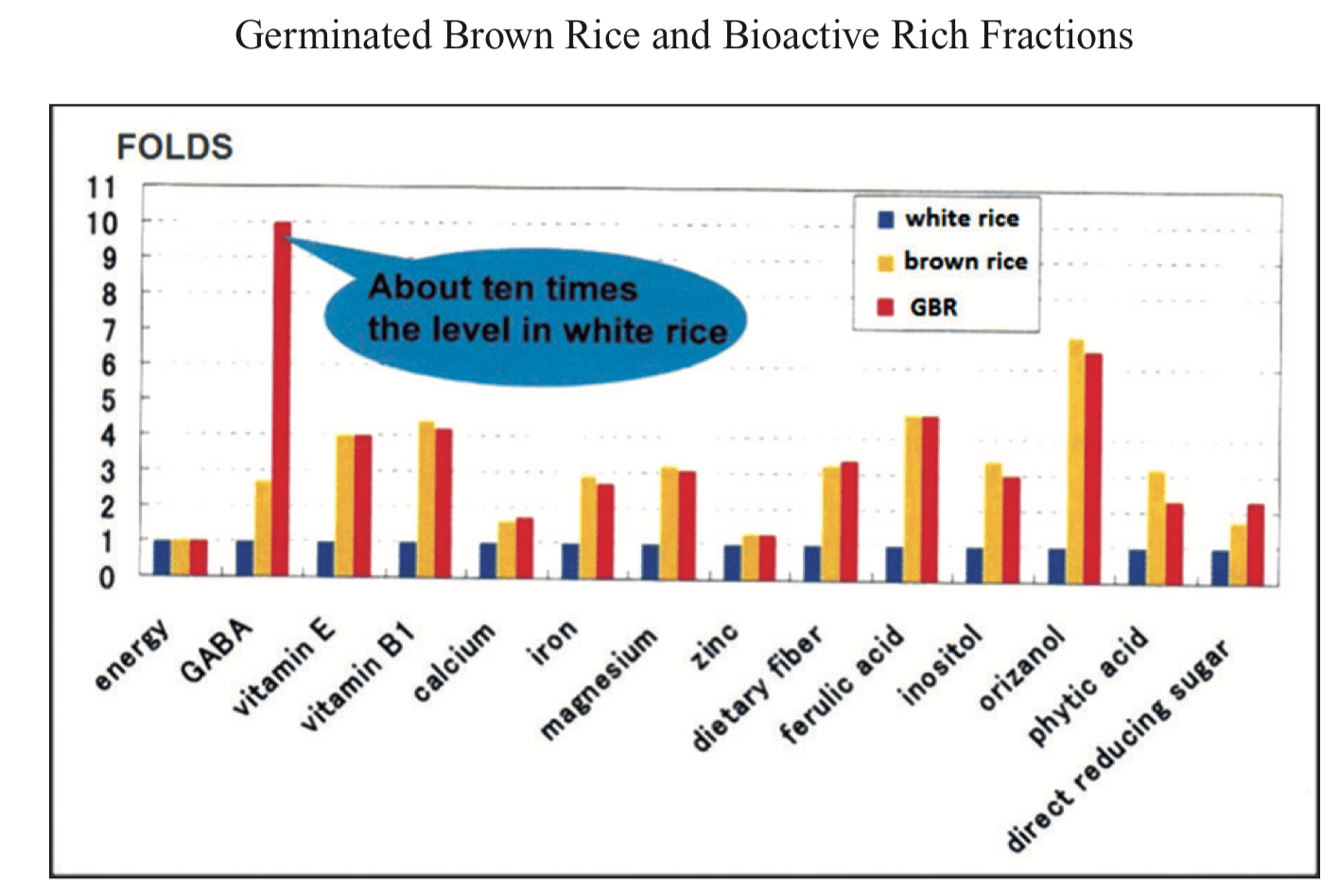 Increased Nutritional Value of Germinated Rice GBR
Increased Nutritional Value of Germinated Rice GBR
The graph above shows nutrititional values in white rice, brown rice, and GBR germinated brown rice. Germinated rice is unpolished brown (or red) rice which has been soaked and allowed to germinate. This improves the flavor and increases nutrient levels, especially protein. It is called GABA rice because of the high level of amino acid and protein gamma-aminobutyric acid (GABA). This GABA rice has a softer texture than brown rice with a nuttier flavour. But if it is polished, rice becomes white, nutritionally dead, and cannot be sprouted.
Fiber is Essential for Digestion
Unpolished brown or red rice are high in fiber content, so the digestion process is slow, which leads to a strong digestive system and a naturally clean intestine. Fiber also slows down the rate at which carbs are converted into blood sugar, so high-fiber unpolished rice is low in glycemic load.
How is GABA Rice Prepared?
Germinated (GABA) rice is an emerging health food where any type of unpolished brown or red rice is soaked in warm water prior to cooking. The warm bath induces germination, or sprouting, which stimulates rice enzymes to produce more nutrients.

In Asia, an electric rice cooker is a key element of every kitchen.
Nearly every meal in Bhutan begins with rice. But white rice increases the risk of diabetes, rates of which are rising quickly in the world. According to the New York Times, a 2010 Harvard study showed that people who consume white rice at least five times a week “are almost 20 percent more likely to develop Type 2 diabetes than those who eat it less than once a month.”
What’s the Best GABA Rice Cooker?
Zojirushi Umami Micom Rice Cooker & Warmer NS-YAC10
Yes, new rice cookers are available that simplify the preparation of GABA rice. The Zojirushi was the most expensive model tested, but also produced the tastiest rice—in a variety of flavors and settings. It excelled in every area. Price ranges from $189 to $400 depending on where you buy it.
Zojirushi offers by far the most features for cooking rice in nearly every imaginable form. The 5.5 cup (dry) capacity cooker has a digital display to help you shuttle between its settings. There are two “keep warm” settings (regular and extended) and menu selections for standard, white, brown, quick, and sushi rice settings, as well as sweet, Umami, and GABA Brown settings and one for mixed rice (with vegetables or other ingredients on top).
The Zojirushi received numerous reviews and write-ups on Amazon, garnering a very strong 4.6 out of 5 stars. Most owners praised the model we determined best here for the GABA and Umami features. Those who primarily cook brown rice were also the most happy with the Zojirushi model.
How was GABA Discovered?
GABA (gamma-aminobutyric acid) is an essential amino acid (a protein) “discovered” in 2004 as part of the United Nation’s Year of Rice research. By germinating the brown rice prior to cooking, GABA, lysine (another amino acid), tocotrienols, magnesium and zinc are all significantly increased. To make GABA rice, you need to start with brown rice – this is because white rice has had the outer layers removed, and is no longer capable of germinating. The brown rice is rinsed, then soaked in water for an extended period of time before cooking. As the rice germinates the amount of gamma-aminobutyric acid increases. The rice is soaked until the embryo become fuller and larger or a sprout starts to emerge. This means the rice has germinated. Since water is naturally absorbed during the germination process, GABA rice will cook faster and need less cooking liquid than other types of rice.
What are the Health Characteristics of GABA Rice?
Fans of GABA rice say that it’s less irritating to the digestive tract, less likely to promote allergic reactions than white rice, and believe that its nutrients are better absorbed. reactions in most people. Polishing removes most of the vitamins and minerals in rice vital to one’s health. Rice bran contains vitamin B and thiamine, both keys to preventing beriberi. For example, in the largest World War II prison camp in the Philippines, American prisoners suffered from beriberi until they convinced the Japanese prison guards to let them cook the bran shavings that came off the polished rice. The beriberi went away.

The image above shows how milling and polishing rice remove nutrients in the outer layers. A diet based on white rice leaves many people vulnerable to the neurological disease beriberi, diabetes, and metabolic disorder, due to its low nutritional value. White rice is often “enriched” with some of the nutrients stripped from it during its processing. In fact, enrichment of white rice with B1, B3, and iron is required by law in the US.

According to Dr. Ritika Samaddar of Max Healthcare Saket in New Delhi, “Milling and polishing destroys 67% of the vitamin B3, 80% of the vitamin B1, 90% of the vitamin B6, half of the manganese, half of the phosphorus, 60% of the iron, all of the dietary fiber as well the essential fatty acids present in the raw variety.” As alarming as these facts may seem, doing away with white rice completely can be a tough choice for most people. This is where healthier alternatives like sprouting can step in.

There are many types of rice, but healthy processing is the same for all.
There’s no benefit in over-polishing rice. Just soak unpolished rice, rinse and cook. Unsoaked brown rice is full of indigestible phytates and lectins, which bind to vitamins and minerals and prevent them from being absorbed. To remove these indigestible compounds, we can simply soak 12-20 hours and rinse well. My grandmother did this. This ancient step somehow has been forgotten.

If you’re in the US, my favorite source is Organic Bhutanese Red Rice from Dragon Herbs. It’s a deep dark red color.
Phytates are anti-nutrients in whole grains that bind to minerals like zinc, copper, iron, magnesium, niacin and calcium, preventing them from being absorbed. Phytic acid also inhibits your ability to break down proteins and sugars. So phytic acid prevents nutrient absorption, and interferes with proper digestion. Phytic acid can easily be removed through soaking. Are you getting this?
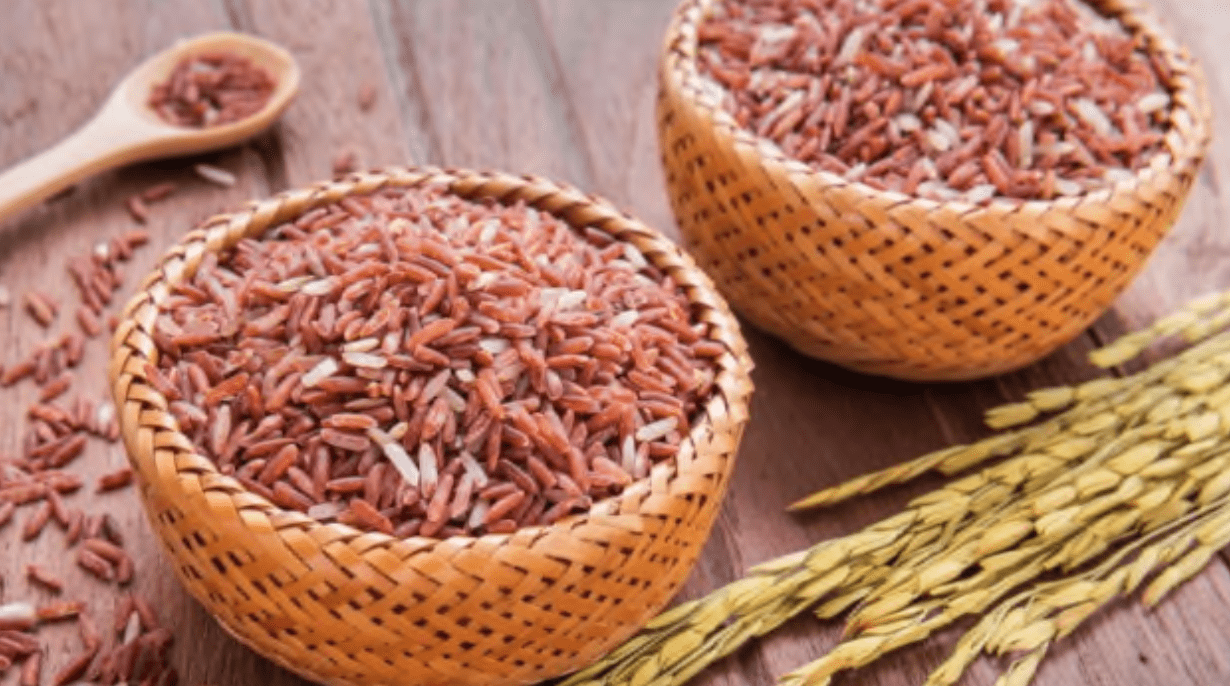
Soaking unpolished dark red rice is an increasingly popular way to boost nutrient content, and helps to create a more complete protein through germination.
Thanks for checking in! Next week is the beginning of Dashain, the biggest festival of the year in Nepal. I’m still waiting in Kathmandu for my Bhutan visa. Meanwhile I’m studying and preparing to teach British English in Bhutan. No idea what else will happen. My travel log comes out 6am every Friday at in the West. Provided I have internet and power. Bye!


